Blog
Check out our blog posts Transits and forecasts
Transits and forecasts
Monthly Horoscope for December 2025 Reading time 4 min
Check out the monthly horoscope and find out how astrological transits can correspond to events in the world a...
 Forecast 2026
Forecast 2026
Astrological Predictions for 2026: The Year's Key Highlights Reading time 5 min
Explore the astrological outlook for 2026: Saturn and Neptune in Aries, Uranus in Gemini, and Jupiter in Leo s...
 Forecast 2026
Forecast 2026
Horoscope 2026: Predictions for Your Rising Sign Reading time 11 min
See the full 2026 horoscope for your Ascendant. Discover how the year will impact love, work, health, and fami...
 Forecast 2026
Forecast 2026
Horoscope 2026: Annual Predictions for Your Sun Sign Reading time 10 min
Check out the complete 2026 horoscope for your Sun sign. Understand the challenges and opportunities the year...
 Forecast 2026
Forecast 2026
Eclipse in 2026: Calendar, Dates, Signs, and Astrological Meanings Reading time 14 min
Check out the dates and meanings of the solar and lunar eclipses of 2026. Understand their astrological effect...
 Forecast 2026
Forecast 2026
Lenormand Cards Predictions for 2026 Reading time 9 min
See the complete Gypsy Card forecast for the year, with the energy of each semester and the message for your z...
 Transits and forecasts
Transits and forecasts
Mercury Retrograde in 2025: Dates and Tips to Make the Most of It Reading time 6 min
Find out what to expect from Mercury Retrograde in July 2025 and see predictions and how to take advantage of...
 Forecast 2026
Forecast 2026
Personal Arcana 2026: Discover Your Mission and How to Use Your Ener... Reading time 8 min
Discover your Personal Arcana and your life?s mission for 2026. See how the energies of the coming year can gu...
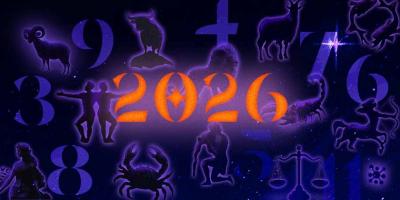 Forecast 2026
Forecast 2026
Numerology 2026 for Each Zodiac Sign Reading time 5 min
Discover how Numerology?s Universal Year 1 will impact each zodiac sign in 2026. See forecasts, strengths, and...
 Forecast 2026
Forecast 2026
Numerology for 2026: The Complete Guide Reading time 5 min
Find out what 2026 has in store for you according to numerology: explore trends for love, health, finances, wo...
 Forecast 2026
Forecast 2026
Tarot Forecast for 2026 Reading time 7 min
See the Tarot forecast for 2026. The Wheel of Fortune guides the year, bringing transformations, surprises, an...
 Forecast 2026
Forecast 2026
Tarot Forecast for Each Zodiac Sign in 2026 Reading time 5 min
Discover how the Wheel of Fortune influences each sign in 2026. Check the Tarot forecasts and get ready for th...
 Relationship
Relationship
Mars and sexual energy in each zodiac sign Reading time 7 min
In Astrology, Mars is also known as the planet of desire and sex. When associated with the signs, it tends to...
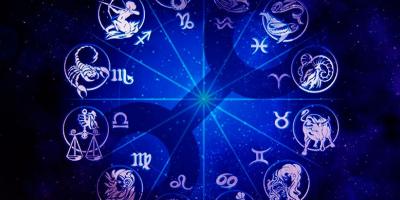 Basic astrology
Basic astrology
Opposite and complementary signs Reading time 5 min
The Opposite and Complementary Signs in Astrology are Aries and Libra, Taurus and Scorpio, Gemini and Sagittar...
 Basic astrology
Basic astrology
Mercury Retrograde in Astrology Reading time 17 min
When Mercury goes into retrograde, its transit can influence some changes in our lives. Read everything you ne...
 Relationship
Relationship
Synastry: An Important Guide to Understanding Relationships Reading time 13 min
Success and happiness are closely linked to our ability to live harmoniously with others. Here at Astrolink, y...
 Hemerticism
Hemerticism
The 7 Hermetic Principles Reading time 8 min
Mentalism, Correspondence, Vibration, Polarity, Rhythm, Cause and Effect, and Gender. Learn about the 7 Hermet...
 Astrology
Astrology
Eclipses - an astronomical and astrological phenomenon Reading time 15 min
Saiba o que são eclipses solares e lunares, seus tipos, curiosidades e o impacto no mapa astral. Entenda esse...
 Numerology
Numerology
Number 22 in Numerology: Understand Its Meanings Reading time 10 min
Explore the meaning of number 22 in numerology and discover its influences in love, career, spirituality, and...
 Transits and forecasts
Transits and forecasts
Mars Retrograde in 2024-2025: dates and tips about the period Reading time 9 min
Discover everything about Mars Retrograde 2024-2025: dates, meanings, and practical tips to navigate challenge...
 Numerology
Numerology
Number 11 in Numerology: Discover Its Meanings Reading time 8 min
Explore the meaning of number 11 in numerology and learn about its influences on love, work, spirituality, and...
 Numerology
Numerology
Numerology for each sign 2025 Reading time 3 min
Find out how Year 9 in numerology will bring self-knowledge and new cycles for each zodiac sign in 2025. Disco...
 Numerology
Numerology
Personal Arcana in 2025: Discover your mission for the year Reading time 7 min
Discover your Personal Arcana and life mission in 2025. Learn how the energies of the coming year can guide yo...
 Numerology
Numerology
Number 8 in Numerology: Unveiling Its Secrets Reading time 7 min
Explore the meaning of number 8 in numerology and discover its influences in love, work, spirituality, and the...
 Transits and forecasts
Transits and forecasts
2025 Horoscope: Astrological predictions for your sign Reading time 9 min
Check the 2025 horoscope with astrological predictions for each sign. Find out what the stars have in store fo...
 Transits and forecasts
Transits and forecasts
What does 2025 have in store? See the main astrological predictions Reading time 8 min
The year 2025 brings significant astrological shifts with Saturn, Uranus, and Neptune changing signs. Discover...
 Numerology
Numerology
Number 7 in Numerology: Discover Its Meanings Reading time 9 min
Explore the meaning of number 7 in numerology and discover its influences on love, work, spirituality, and the...
 Numerology
Numerology
Number 9 in Numerology: Understand Its Meanings Reading time 8 min
Explore the meaning of number 9 in numerology and discover its influences on love, work, spirituality, and the...
 Tarot and Lenormand Cards
Tarot and Lenormand Cards
Tarot Predictions for 2025 Reading time 5 min
Discover the Tarot predictions for 2025 and see their influences on love, health, finances, and work, with ins...
 Numerology
Numerology
Numerology Predictions for 2025 Reading time 3 min
Discover the Numerology 2025 predictions and learn how the number 9 impacts love, health, finances, and work....
 Transits and forecasts
Transits and forecasts
Void of Course Moon in 2025 Reading time 7 min
Learn all about the Void of Course Moon in 2025 and how its dates can impact your decisions and energy. Unders...
 Transits and forecasts
Transits and forecasts
2025 Lunar Calendar: dates and phases of the Moon in each sign Reading time 5 min
Access the complete 2025 lunar calendar, featuring eclipses and all moon phases in each zodiac sign.
 Tarot and Lenormand Cards
Tarot and Lenormand Cards
Celtic Cross in Tarot: Learn to play this method Reading time 3 min
The Celtic Cross in Tarot is a method recommended for those seeking deeper and more comprehensive answers. Lea...
 Tarot and Lenormand Cards
Tarot and Lenormand Cards
Rider-Waite Tarot: everything you need to know to start playing Reading time 4 min
The Rider-Waite Tarot is one of the most widely used decks around the world. Discover its characteristics, lea...
 Astrology and daily life
Astrology and daily life
Astrology and Artificial Intelligence Reading time 6 min
Learn about the contributions and challenges of the union between Astrology and Artificial Intelligence and di...
 Numerology
Numerology
Number 1 in Numerology: discover the meanings Reading time 7 min
Discover the meaning of number 1 in numerology and its influences on love, work, and spirituality
 Numerology
Numerology
Do lucky numbers exist? Find out how to discover yours Reading time 3 min
Learn how to calculate your lucky numbers through numerology and discover how they can positively influence yo...
 Tarot and Lenormand Cards
Tarot and Lenormand Cards
Step-by-step guide to play Gypsy Cards Reading time 7 min
Learn a simple step-by-step guide on how to play gypsy cards and start reading the cards right now!
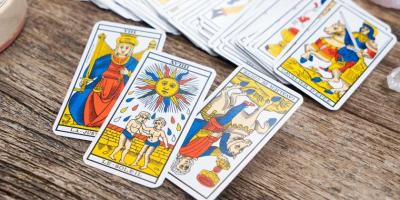 Numerology
Numerology
Learn what Personal Arcana is and how to discover yours Reading time 6 min
Explore the world of personal arcanas and understand how the combination of tarot and numerology can reveal yo...
 Transits and forecasts
Transits and forecasts
Numerology Predictions for 2024 Reading time 17 min
Discover your personal year in numerology for 2024, understand the energy of the number 8, and read prediction...
 Transits and forecasts
Transits and forecasts
World Astrology Forecast for 2024 Reading time 2 min
The new year is full of important astrological movements. See the trends that Astrology indicates for world ge...
 Transits and forecasts
Transits and forecasts
Void-of-Course Moon in 2024 Reading time 9 min
See the complete table with the dates of the Void-of-Course Moon in 2024, understand the influences, and check...
 Astrology and daily life
Astrology and daily life
2024 Yearly Horoscope Reading time 7 min
Check out the complete horoscope for 2024 and discover the trends that Astrology points to for the new cycle....
 Tarot and Lenormand Cards
Tarot and Lenormand Cards
Tarot Predictions for 2024 Reading time 7 min
Discover what to expect from the next year with the Tarot predictions for 2024. Ruled by the arcana The Streng...
 Transits and forecasts
Transits and forecasts
Retrograde Planets in 2024 Reading time 6 min
The retrograde planets of 2024 are: Mars, Jupiter, Saturn, Mercury, Uranus, Neptune, and Pluto. See the dates...
 Transits and forecasts
Transits and forecasts
Lunar Calendar 2024: dates and Moon phases in each sign Reading time 7 min
Complete Lunar Calendar 2024, with eclipses and all the dates and phases of the Moon in each sign to help you...
 Numerology
Numerology
Discover the Meaning of Numbers in Numerology Reading time 11 min
Learn the meaning of each number in numerology, discover how they influence our personality and interactions,...
 Basic astrology
Basic astrology
Lunar Eclipse: Understand the Phenomenon and Its Astrological Influe... Reading time 8 min
Find out how the lunar eclipse relates to Astrology, how it occurs, what personal transformations and influenc...
 Astrology
Astrology
Solar Eclipse: Understand the Phenomenon and Its Astrological Influe... Reading time 8 min
Understand the astrological influences of a solar eclipse, find out how to make the most of this moment and un...
 Astrology and daily life
Astrology and daily life
Career Transition: How Astrology Can Help Reading time 5 min
Astrology can assist in career transitions by fostering greater awareness of your characteristics, skills, and...
 Transits and forecasts
Transits and forecasts
North Node in Aries - 2023 to 2025 Reading time 4 min
The entry of the North Node into Aries adds a more confident, dynamic and belligerent flavor to events in the...
 Relationship
Relationship
Emotional Dependence: What It Is and How to Break Free Reading time 9 min
Emotional dependence is characterized by an excessive need for another person to feel complete, secure, or hap...
 Numerology
Numerology
House number numerology: what it says about where you live Reading time 7 min
Learn how to calculate the numerology of your home, see the meaning of your home's energy according to numerol...
 Numerology
Numerology
What is the meaning of mirror hours? Reading time 17 min
According to numerology, seeing mirror hours is a sign from the Universe. Learn the meaning of each mirror hou...
 Transits and forecasts
Transits and forecasts
Lunar Calendar 2023 Reading time 1 min
Check all the dates of the Moon`s phases in the year.
 Astrology and daily life
Astrology and daily life
Motherhood in the Birth Chart: House 5 can bring answers Reading time 12 min
Recurring questions on the minds of women who are into Astrology. Whether they want to be a mother or not, all...
 Numerology
Numerology
Love Numerology: what the numbers reveal about relationships Reading time 9 min
What can numbers tell us about our relationships? Discover with Love numerology the main couple trends
 Astrology and daily life
Astrology and daily life
Self-Esteem in the Natal Chart Reading time 4 min
Astrology can help us find clues about this theme. In this article, you?ll understand how to observe your self...
 Relationship
Relationship
How to Handle Financial Resources in a Relationship? Reading time 4 min
Most people want to find someone to share dreams and life projects with. When that finally happens, it?s time...
 Well-being and self-help
Well-being and self-help
How to Achieve Emotional Balance and Maturity? Reading time 5 min
Emotional maturity is the ability to bring awareness to the realm of emotions; that is, it's one of the stages...
 Relationship
Relationship
How to Maintain a Healthy Relationship Reading time 4 min
A healthy relationship is built on empathy, respect, affection, love, and, of course, a lot of self-awareness...
 Tarot and Lenormand Cards
Tarot and Lenormand Cards
What is the difference between the Tarot de Marseille and the Rider... Reading time 4 min
The Tarot de Marseille is one of the most popular in the world, as is the Rider Waite Tarot. As well as differ...
 Astrology and daily life
Astrology and daily life
Rising x Descendant: The other You Reading time 13 min
The Rising sign (beginning of House 1) rules our personal potential, being the place where we start things and...
 Relationship
Relationship
Sexuality and Astrology Reading time 9 min
Did you know that astrology can indicate many nuances of our relationship with sex, as well as the relationshi...
 Basic astrology
Basic astrology
How to Read your Birth Chart Reading time 21 min
A complete guide for you to learn step by step How to read your Birth Chart, including planets, signs, houses,...
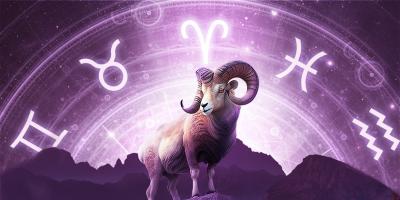 Basic astrology
Basic astrology
What is the Astrological New Year Reading time 8 min
The Astrological New Year is not related to this social convention but rather to the Spring Equinox, which occ...
 Astrology
Astrology
The Phases of the Moon Reading time 12 min
The phases of the Moon can interact with you. Its phases set the tone in astrology with peculiar purposes and...
 Basic astrology
Basic astrology
What are Lunar Nodes? Reading time 19 min
The interpretation of the lunar nodes is widely used in some astrological streams. Understand what the lunar n...
 Basic astrology
Basic astrology
Part of Fortune in the Birth Chart Reading time 8 min
Much is said about the Part of Fortune (or wheel of fortune, point of fortune) in Astrology. It represents a p...
 Basic astrology
Basic astrology
Quadrants and Hemispheres of the Birth Chart Reading time 19 min
A birth chart can be divided into four quadrants: Horizontal with Ascendant and Descendant and vertical, with...
 Basic astrology
Basic astrology
Understanding the Qualities of the Signs Reading time 7 min
The division of the 12 signs by the 4 elements in astrology is called triplicity, that is, for each element we...
 Basic astrology
Basic astrology
The Water Element Reading time 8 min
The Water element in astrology governs emotions, the subconscious mind, sensitivity, feelings and underlines t...
 Basic astrology
Basic astrology
The Air Element Reading time 9 min
The Air element in astrology corresponds to the mental spectrum, intellect, communication and exchange, being...
 Basic astrology
Basic astrology
The Earth Element Reading time 8 min
The Earth element in astrology stands for substance and practicality, being the hallmark of Taurus, Virgo, and...
 Basic astrology
Basic astrology
The Fire Element Reading time 8 min
The Fire element in astrology represents action, motivation and creativity, being the fuel of Aries, Leo and S...
 Basic astrology
Basic astrology
Learning about the 4 Elements Reading time 8 min
We all incorporate the 4 elements in some way in our lives. We are standing on the Earth and derive part of ou...
 Basic astrology
Basic astrology
Combustion, Cazimi and Under the Sun`s Beams Reading time 9 min
For Astrology, a complete assessment of a chart must take into account several factors. One of them, little kn...
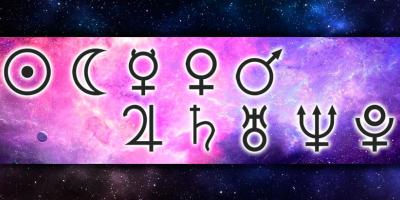 Basic astrology
Basic astrology
Planetary Symbols Reading time 11 min
Planetary symbols (or glyphs) have a history and meaning. Contrary to what many think, they are not just rando...
 Basic astrology
Basic astrology
The Rulers of the Year and the Cycle Reading time 14 min
You may have heard the phrase: This is a year ruled by Jupiter or another star. If not, it`s a common practice...
 Basic astrology
Basic astrology
Saturn`s cycles in our lives Reading time 7 min
Saturn represents one`s conscience, limits and rules, what we make of life and what we reap from it. It takes...
 Basic astrology
Basic astrology
Planetary Aspects in Astrology Reading time 20 min
Aspects essentially show how various planets relate to each other, based on the location where they are at a g...
 Basic astrology
Basic astrology
Understanding the Rising Sign Reading time 15 min
The Rising Sign is considered by many to be one of the most complex subjects in astrology, causing many questi...
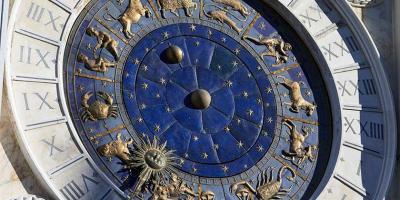 Basic astrology
Basic astrology
What is the Zodiac Sign for each month? Reading time 15 min
Find out what the sign of each month is and understand what criteria were considered by Astrology for this def...







 © 2012 - 2025. All rights reserved.
© 2012 - 2025. All rights reserved.